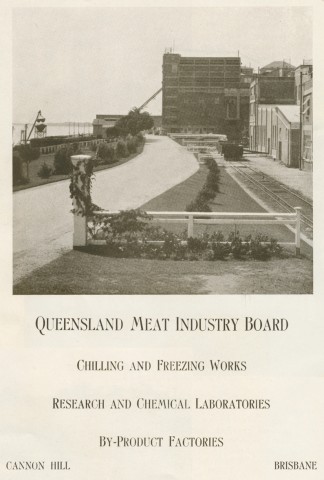Cannon Hill, a residential suburb on Wynnum Road, is 5 km in a direct line from central Brisbane. Travel by rail or road is considerably further.
The name is variously thought to have come from two tree stumps noted by a surveyor as resembling cannon or, more likely, from Cannon Hill House (1867) built by an early European settler in Wynnum Road opposite the present primary school.
In 1889 the railway to Cleveland was opened and, anticipating a demand for blocks of land near the station, an estate was put on the market. Ballistic-sounding Shrapnel, Gatling and Grenade Roads mark the place. As an investment, the estate did not ignite.
In 1913 the Swift Company built a meatworks near the river, north of Cannon Hill, and in 1915 the Cannon Hill primary school was opened. A school of arts was opened at the corner of Barrack and Wynnum Roads where a small shopping centre would grow.
The Swift enterprise employed 300 people during its construction and was an important source of local employment. In 1931 it was acquired by the government for the Metropolitan Public Abattoir Board, and a saleyard and holding pens were constructed. The complex, including several wholesale butchery and meat exporters, extended from the railway line to the abattoir on the river, a distance of 2 km, traversed by a spur line. It replaced the saleyard at Newmarket.
During 60 years of operation the Cannon Hill Saleyard sold livestock from most of Queensland (sometimes bypassing Rockhampton and Dalby), Northern Territory and South Australia. It was a modern facility with sealed surfaces, important during outbreaks of stock diseases. During the 1980s inland and New England saleyards competed more effectively, and a feedlot facility gained a putrid reputation within smelling distance of suburbia. The saleyard was closed in 1991 and the land was turned over to housing and an office park. The saleyard's handsome two-storey double verandahed administration building has been re-constructed at the Mount Gravatt showground.
Until the 1960s Cannon Hill was based around the intersection of Wynnum and Barrack Roads, with about eight stores, a post office, the school of arts, Catholic and Presbyterian churches and the Catholic school (1946) to the west. The village centre received a series of blows in the 1970s when three drive-in shopping centres were opened in Wynnum Road, about a kilometre to the east. One of them had a Waltons discount department store, whose site was absorbed by Kmart Plaza when the Waltons-Bond empire collapsed. An Anglican college on Krupp Road opened in 1989.
Cannon Hill is an irregularly shaped suburb. The former saleyard site is in neighbouring Murarrie, but Cannon Hill extends east behind Kmart to a large reserve along Bulimba Creek.
The Beattie Labor government built an emergency response complex at Cannon Hill to house fire, ambulance, chemical and major disaster planning units in 2004.
A new 18-hole public golf course at Cannon Hill was planned by the Brisbane City Council on a rehabilitated old landfill site at 1825 Creek Road. The Cannon Hills Community Links would open in 2018.
Its census populations have been:
| Census Date | Population |
|---|---|
| 1911 | 58 |
| 1921 | 702 |
| 1954 | 369 |
| 1976 | 4259 |
| 2001 | 4392 |
| 2006 | 4083 |
| 2011 | 4507 |
Ronietta Wakefield, Cannon Hill School of Arts 75th anniversary 1923-1998, Cannon Hill, School of Arts Trustees, 1998
Colin Mercer and Robin Trotter, Historical study: Cannon Hill saleyards, Brisbane, Department of Housing, Local Government and Planning, 1995
John Gilfoyle, Remember Cannon Hill, Moorooka, Boolarong, 2009

